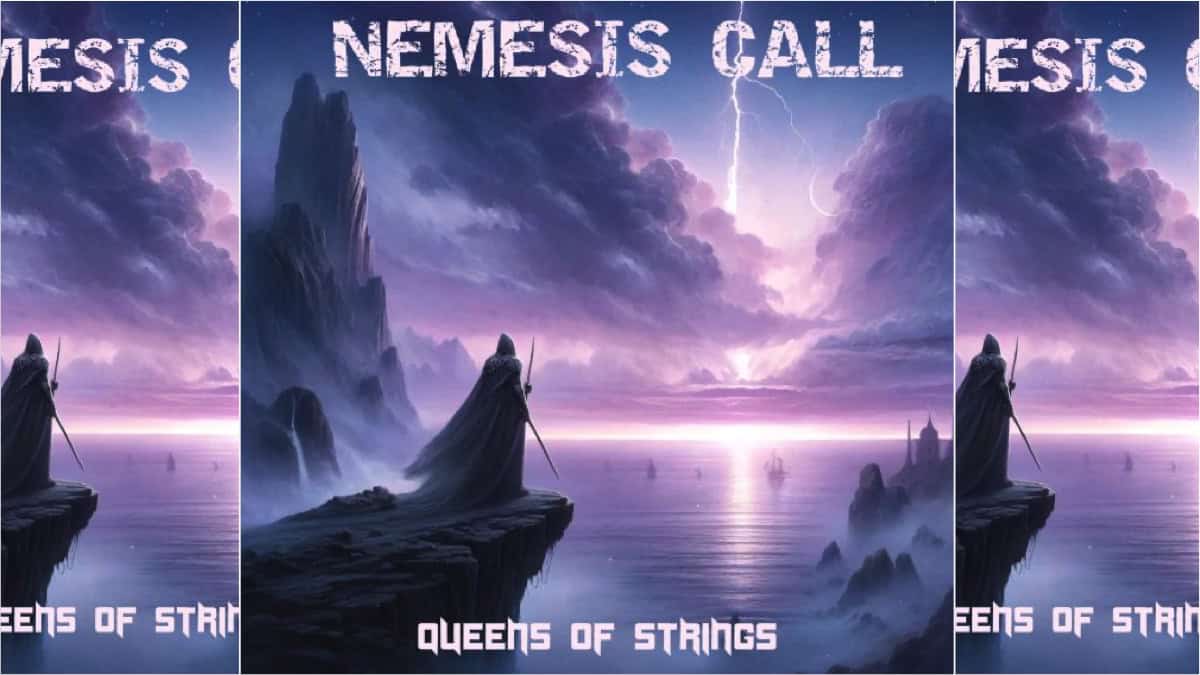Latest
Slap Basics With Doug Johns: Traveling Bass-ics

So, I’ve wanted to write this article for quite some time, and no, it doesn’t have anything to do with opening the slap bass vocabulary. But that’s what I love about BMM, freedom to speak about relevant bass stuff from any angle.
Anyhow, I travel a lot as a bass player, and getting my instrument on board an airplane is often a weekly ritual. Although I think I’ve become somewhat skilled on this subject with all the flying I do, feedback is really the main goal of this article. While I’ve got a few tricks that I think you’ll find helpful, I still find out something new every time the subject comes up… and that’s why I’m bringing it up now.
I must start with the premise that, in my experience, most airlines don’t want you to bring an instrument onboard! And the number one obstacle I have is that the airline crew “thinks” it’s too big to fit in an overhead bin. If you’ve ever flown with your instrument or even have just thought about it, you KNOW that’s B.S. Actually, a bass guitar is much smaller than what the majority of passengers carry on board the plane.
And you can’t buy into the rumors that they’ll gladly put your bass in the closet. That works great for going overseas, but on domestic flights, the closet space (if there is any at all) is reserved for first class customers. To be fair, I recently was offered the closet for my bass, although I ended up taking the overhead – but that was a one-in-a-million situation.
Ahhh… the dreaded gate check. If you – and you will – get an airline employee who just insists that there is no way in hell you’re taking your bass on board, they will require you to put a gate check tag on your bag. Be scared, be very scared.
Gate check is simply the act of leaving your priceless instrument in the hands of one of the ramp crew employees waiting for you at the end of the walk to the plane. They then take your instrument outside (come rain, snow or sleet) and stack it on top of the already-packed load under the plane – this makes it easy to pull out for you, and your instrument is returned as soon as you step out of the plane and into the gate ramp.
I’m not a fan of the gate-check, and I generally do what I can to avoid it – even when I am forced to take the gate check tags. Tip: In the picture below, you’ll see how I always have the airline put the gate check tag in the same place on my gig bag so I can hide it between the zippers and zip the tag inside the bag – as soon as the gate crew’s backs are turned. Then, when I get to the bottom of the ramp, it looks as though “I’m cleared” for taking it onboard and no gate check for me!
Musicians want to know that their instruments are safe, and some (like me) need to keep their basses with them. There are probably thousands of times where an instrument was checked in a hard case – maybe even a soft gig bag – and survived the journey in perfect condition; likewise for the gate-check. But since my preference is to keep my axe by my side (or above my head), I’ve got a few theories on what works best.
Let’s step back and consider the psychology of this for a second:
In these times of underwear bombs and flammable shoes, airlines are threatened by anything that doesn’t fit the status quo. They want to see roller boards. Roller boards? What is that, you ask? That’s the standard roller suitcase that you see most people traveling with. Generally, you can fit 4 regular size roller boards in an overhead bin.
With the right gig bag, you can fit your bass, along with 2 roller boards and 3-4 small “squishy” bags around it, in the exact same space. The trick is getting the flight crew to believe it before they see the magic happen. This leads to step 1 of my bass-on-board ritual: carrying the right gig bag.
I’m not going to turn this into a gear shoot-out, and I don’t want to offend any of the manufactures, but there are some bags better suited than others when it comes to carrying your bass on board a plane. I’ve experimented with Undercover, Reunion Blues, Mono and Fodera’s bags – and honestly, I haven’t found any one to be completely perfect for the on-board bass fanatic.
One major thing you must consider with a gig bag is illusion: after all, if the bag looks like it will fit in an overhead, that’s half the battle won. Creating the illusion of a smaller object on your back is crucial. I’ve got every gig bag known to man, and some of them really meet this need well. From sleek design to a more “luggage” look, there are a lot of options when it comes to creating the illusion of a smaller gig bag. And remember, dark colors are slimming!
But in some cases, getting that streamlined look comes at the cost of protection in the event that your bass is gate-checked. I’ve got bags that look very slim and trim, but I cringe at the thought of handing them over to the ramp crew. I am especially wary of construction that is too minimalist or of bags that attempt a one-size-fits all approach, only to leave a bunch of extra space above the neck of the bass.
Like I said, I own a lot of gig bags, and I use them all from time to time. But, as with any good plan, a lot more goes into getting a bass on board than creating the right illusion. Once you’ve chosen your bag, you’ve got to make sure you’ve got somewhere to put it on the plane… and so begins step two: Booking your seats in advance.
Pre-book your seat for rows 25 and back on standard B/737-800/900 planes whenever possible. If you’re in rows 25 and higher, you’ll have full access to tons of bin space. On the other hand, if your seat is in the first 10 rows of the plane, you’ll probably find that precious overhead space hard to come by – and you’ll be more likely to get the dreaded gate check.
Now, if you fly enough and stick to one or two airlines, you can avoid sitting in the back altogether. Gaining (or buying) preferred or elite status with an airline entitles you to early boarding, regardless of your seat assignment. I finally reached this milestone with one airline this year, and now I can sit in the front of the plane and get off quickly at my destination – without sacrificing bin space.
Anyhow, once my flight is booked, I move on to the next step of my flying musician ritual: As soon as I get to my departure gate, I step up to the airline counter and say something nice, have some conversation, with an airline employee. Sounds simple, but kindness is what makes the world go around. Putting some positive vibes in the air and around yourself may not be fail-proof, but it certainly leans the odds just a bit in your favor.
When it comes time to board the plane, DON’T stand up and put your bass on your back! My drummer Chris and myself have experimented with this a lot. Carry your bass vertically, and to the opposing side of the boarding pass check employee. You don’t want to advertise the fact that you have what seems to be a rather large object next to you. A lot of bags have a handle half way up on the neck-end of the bag for carrying vertically – if you’ve got one, using it seems to work well.
And then…. success! You’re on the plane and so is your bass! The ritual doesn’t end here – after all, the plane door is still open, you’re still on the ground, and therefore those gate check tags are still an option for the flight crew. So, I’ll actually stand by the overhead after I put my bass in it and ask the passengers coming down the isle if they need help putting their suitcases overhead. This not only reassures the flight crew that everything is okay, but it also helps me be sure nobody smashes into the side of my bass bag. I’ll actually tell everyone that I’m looking to protect my instrument, and folks almost always reply positively.
Wow – this has been a long article! I want to insist that I am not just ranting and complaining, and I’m not here to endorse one airline or gig bag over another. Instead, I’m hoping this will spur feedback/forums on the subject…. Even though my ideas have come out of a lot of obsessive research and observation, I’m sure we can all learn a trick or two from each other.
Now, get out (in an airplane), and jam with somebody!
Doug
Gear News
New Gear: Spector Doug Wimbish USA Custom Series Basses

Spector offers Doug Wimbish USA Custom Series basses…
Spector, a leading authority in bass guitar design, unveils two new Doug Wimbish USA Custom Series basses. Synonymous with bass excellence since 1987, Wimbish collaborated with Spector’s USA Custom Shop to create the DW-4 and DW-5 models, echoing the iconic instruments that have been favored heavily throughout his recording and performing career.
These signature basses faithfully replicate Wimbish’s originals, down to the smallest details like neck contours and nut widths. Customized EMG pickups, developed in collaboration with Wimbish, capture the distinctive sound that has shaped his monumental musical impact. These models invite players to explore the feel and response that have defined Wimbish’s signature style over the years.
Available in 4-string and 5-string versions, each model boasts unique features & finish options. The DW-4 comes in Amber Stain Gloss and Black Stain Gloss options, while the DW-5 offers Dark Blue Stain Gloss and Faded Natural Gloss. Every purchase includes a certificate of authenticity signed by Doug Wimbish. Wimbish comments, “Spector took the time to get every little nuance right, and that to me is dedication and being thoughtful enough to know ‘I want to nail it,’ and they did. I’m able to pick these instruments up for the first time and play them like I’ve already had them for years.”
For more information, visit spectorbass.com/doug-wimbish-usa-signature-series/.
Photo: Doug Wimbish, pictured with the new Spector Doug Wimbish USA Custom Series basses
Bass CDs
New Campaign: Alberto Rigoni, Nemesis Call – Queens Of Strings

Italian bass master and composer ALBERTO RIGONI is thrilled to announce his brand new project “Nemesis Call – Queens Of Strings”.
Nemesis Call – Queens Of Strings features a super talented drummer from Japan (TBA) and tons of female guitarists such as SAKI, Giusy Busetto, Alexandra Zerner (TBC) and many many others (TBA). Furthermore, Alberto has also launched a Fundraising Campaign for the project. 20% of the income will be donated to Lega del Filo d’Oro legadelfilodoro.it/it, an Italian association that helps deaf and blind children!
Alberto shares:
“Hello friends and music lovers! I’m Alberto Rigoni, an Italian composer and.. a BASS GUY! Between 2008 and 2024 I released 13 solo albums, spanning from progressive, rock, ambient to funky and experimental music, which also features contributions from musicians such as keyboard wizard Jordan Rudess (Dream Theater) drummer Gavin Harrison (Porcupine Tree) and Marco Minnemann (the Aristocrats), keyboardist Kevin Moore (ex Dream Theater), singer John Jeff Soto (ex Goran Edman (ex Y. Malmsteen), bassists Nathan East, Stu Hamm (Joe Satriani), Nik West (ex Prince) and many others. I’m also bass player for BAD As, Sunset Groove Society, Kim Bingham, The Italians bands and co-producer of Mistheria’s Vivaldi Metal Project.”
Alberto on the new project Nemesis Call:
“Even if my latest album “Unexpected Lullabies”, dedicated to my newborn Vittoria Parini Rigoni, will be released on June 4th, 2024, when Vittoria came to life I felt the need to compose new music (yes, I really can’t stop!!!!!). This time will be quite challenging because I’m willing to release an instrumental ambient/prog/rock/metal album, that will feature a talented and young drummer (TBA) and tons of female guitarists (that’s why I will call the album “Queens of the Strings”) such as Alexandra Zerner, YOKA and many others (TBA/TBC)). It won’t be easy to manage all such great musicians but I will make it!! Are you ready to face a new prog experience? The album will be released in Digipack CD and in high-quality digital format approximately at the beginning of 2025.”
The Fundraising Campaign:
As an independent artist, Alberto is looking for supporters who can help him reach the budget for the production (recordings, mix, mastering, artwork etc.) of this new album and has started this fundraising campaign that will end successfully on October 15th, 2024.
Get further information about Alberto Rigoni’s new project Nemesis Call Fundraising campaign at albertorigoni.net/nemesiscal
Bass Videos
Artist Update With Bassist Derek Frank

Bassist Derek Frank…
Many of you will remember the last time I chatted with Derek Frank was back in 2017. The main thing that impressed me was how busy Derek was and how he juggled playing with many huge acts.
Now, I am happy to hear that Derek launched a new album last March titled “Origin Story” where he digs deep into his roots and pays homage to Pittsburg.
Join me as we get caught up after all these years and hear the details about the new album, how Derek gets his sound, and his plans for the future.
Photo, Stephen Bradley
Featured Videos:
Visit Online:
www.derekfrank.com
www.instagram.com/derekfrankbass
www.youtube.com/derekfrankbass
www.facebook.com/derekfrankbass
Latest
This Week’s Top 10 Basses on Instagram

Check out our top 10 favorite basses on Instagram this week…
Click to follow Bass Musician on Instagram @bassmusicianmag
FEATURED @foderaguitars @bqwbassguitar @lecomptebass @xvector_basses @vuorensaku_guitars @phdbassguitars @meridian_guitars @sterlingbymusicman @ramabass.ok @overwaterbasses
Gear News
New Gear: Alberto Rigoni Signature Bass, the VPR5 by Gaetano Costanzo!

Alberto Rigoni Signature Bass, the VPR5 by Gaetano Costanzo!
Internationally renowned bassist ALBERTO RIGONI (soloist, BAD AS, Vivaldi Metal Project, TwinSpirits, etc.) is proud to announce the release of his signature bass VPR5 made by renowned Italian luthier Gaetano Costanzo!
The bass is entirely handmade in Italy, without the use of CNC or other machinery, and has rather special features. The VPR is a 5-string bass (but also available as a 4-string) with 30 frets, Seymour Duncan pickups, Music Man Alnico style, passive electronics (volume, tone and a switch to select series/parallel/single-coil mode), alder body, and American maple neck and fingerboard. Gotoh tuners that ensure perfect intonation. The bass is totally painted white (nitro finish) but other colors can be requested. The VPR has a weight of about 2.9 kg and suitable for any genre.
For more information contact Gaetanobass77@gmail.com or visit online at www.instagram.com/gaetanocostanzoluthier or www.facebook.com/GaetanoCostanzoLuthier
















